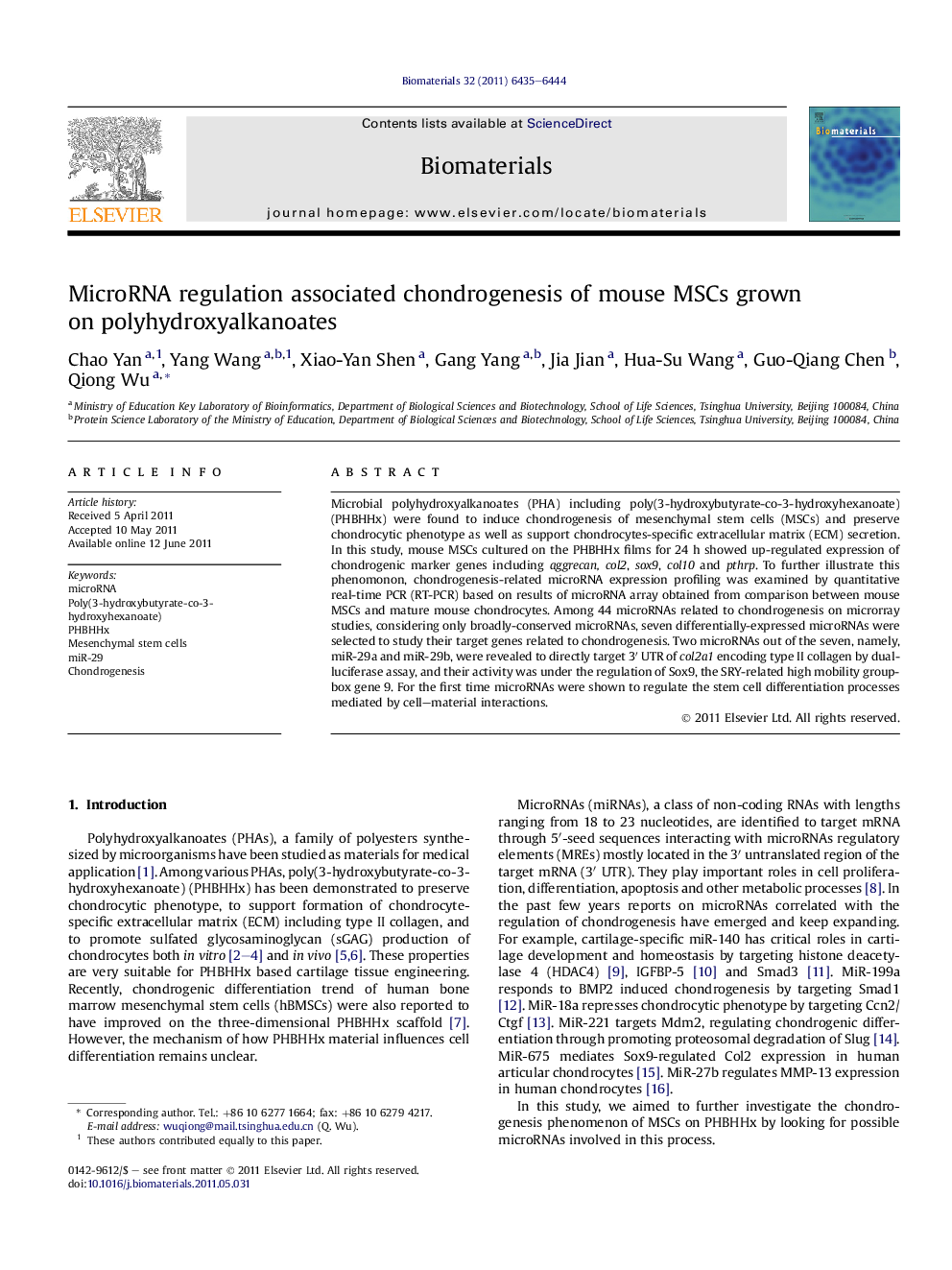| Article ID | Journal | Published Year | Pages | File Type |
|---|---|---|---|---|
| 10229565 | Biomaterials | 2011 | 10 Pages |
Abstract
Microbial polyhydroxyalkanoates (PHA) including poly(3-hydroxybutyrate-co-3-hydroxyhexanoate) (PHBHHx) were found to induce chondrogenesis of mesenchymal stem cells (MSCs) and preserve chondrocytic phenotype as well as support chondrocytes-specific extracellular matrix (ECM) secretion. In this study, mouse MSCs cultured on the PHBHHx films for 24Â h showed up-regulated expression of chondrogenic marker genes including aggrecan, col2, sox9, col10 and pthrp. To further illustrate this phenomonon, chondrogenesis-related microRNA expression profiling was examined by quantitative real-time PCR (RT-PCR) based on results of microRNA array obtained from comparison between mouse MSCs and mature mouse chondrocytes. Among 44 microRNAs related to chondrogenesis on microrray studies, considering only broadly-conserved microRNAs, seven differentially-expressed microRNAs were selected to study their target genes related to chondrogenesis. Two microRNAs out of the seven, namely, miR-29a and miR-29b, were revealed to directly target 3â² UTR of col2a1 encoding type II collagen by dual-luciferase assay, and their activity was under the regulation of Sox9, the SRY-related high mobility group-box gene 9. For the first time microRNAs were shown to regulate the stem cell differentiation processes mediated by cell-material interactions.
Keywords
Related Topics
Physical Sciences and Engineering
Chemical Engineering
Bioengineering
Authors
Chao Yan, Yang Wang, Xiao-Yan Shen, Gang Yang, Jia Jian, Hua-Su Wang, Guo-Qiang Chen, Qiong Wu,
